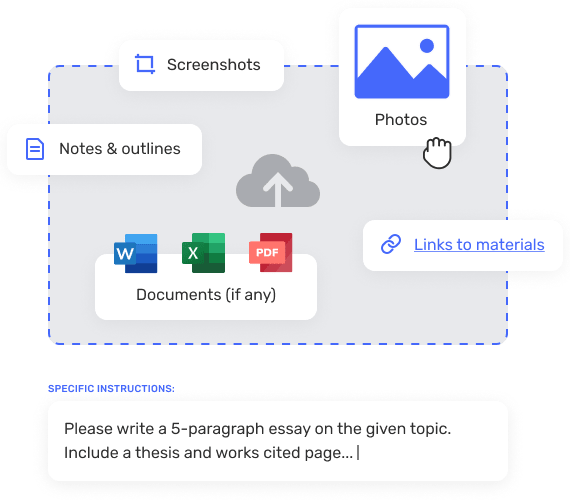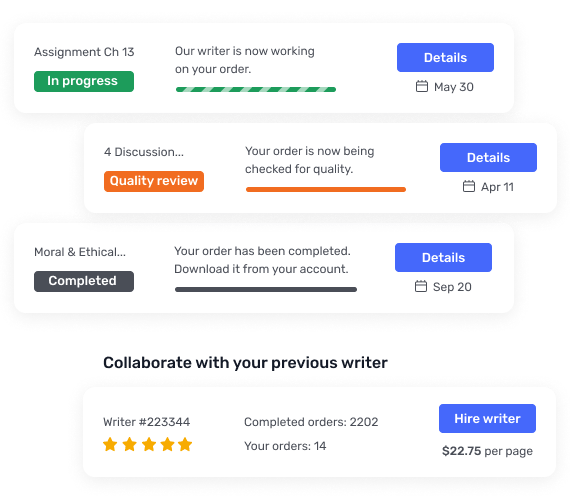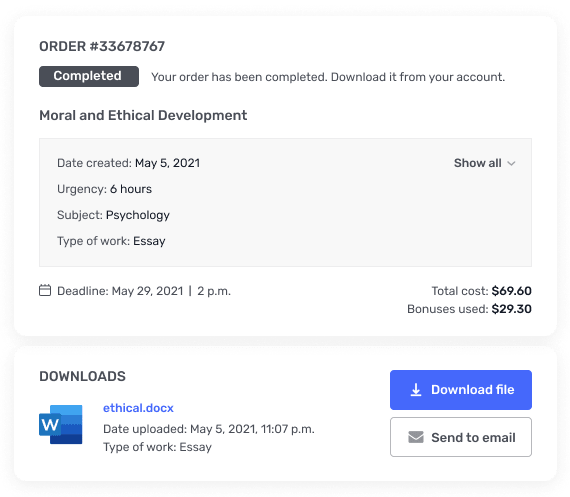MGS 4420- A successful sales manager was promoted to being CEO of a large conglomerate
QuizNote: It is recommended that you save your response as you complete each question. Question 1 (2.5 points)A successful sales manager was promoted to being CEO of a large conglomerate. Shortlyafterward, the manager decided that her style of leadership was inappropriate, and altered theway that she practiced leading. This is an example of:Question 1 options:organizational learning.performing the figurehead role.none of the answers are correctcontingency leadership.Question 2 (2.5 points)A manager from a prestigious university believed that employees who were from “lesser schools”lacked sufficient intelligence and motivation for the high-tech firm that she led. She set goals forthese employees low, and did not trust them with certain important tasks or companyinformation. The employees, in fact, tended to show dissatisfaction and low performance. Atlength, many of them quit. This would be an example of:Question 2 options:negative self-concept.none of the answers are correctTheory Y.the Pygmalion effect.Question 3 (2.5 points)Which of the following is NOT an example of an effective goal statement?Question 3 options:I will sell 50 magazines during the month of March.I hope I will find a job and new apartment this summer. I will finish writing my term paper for English 101 by the end of this weekend.I will increase sales in the U.S. by 30% in 2011.Question 4 (2.5 points)Early leadership studies were based on the assumption that leaders are:Question 4 options:autocratic.primarily male.born, not made.also managers.Question 5 (2.5 points)The designing of a new performance evaluation system would be an example of which of thefollowing managerial roles?Question 5 options:interpersonaldisturbance-handlerentrepreneurnegotiatorQuestion 6 (2.5 points)Emotional intelligence is clearly related to which of the Big Five personality dimensions?Question 6 options:adjustmentconscientiousnessagreeablenesssurgencyQuestion 7 (2.5 points)People with strong n Ach tend to have all of the following EXCEPT: Question 7 options:self-confidence.external locus of control.high energy traits.a high concern for excellence in accomplishments through individual efforts.Question 8 (2.5 points)Based on the situational factors, the __________ leadership style is most appropriate whenfollowers want to be involved.Question 8 options:supportiveachievement-orienteddirectiveparticipativeQuestion 9 (2.5 points)People who have this personality trait are more likely to use unethical behavior.Question 9 options:surgencyinternal locus of controlexternal locus of controlpositive self-conceptQuestion 10 (2.5 points) The leader who permits followers to make ongoing decisions within defined limits uses whichstyle on the leadership continuum model?Question 10 options:1 4 6 7 Question 11 (2.5 points)If the manager is not around, employees will work just as hard is an example of ___________attitude.Question 11 options:XYZ ProfileTheory ZTheory YTheory XQuestion 12 (2.5 points)Unlike other contingency leadership models, the path-goal leadership model does not have a__________ trait.Question 12 options:situationleaderbehaviorfollowersQuestion 13 (2.5 points)Dominance is a trait related to the Big Five personality dimension of:Question 13 options:Agreeableness. Adjustment.Surgency.Conscientiousness.Question 14 (2.5 points)According to the University of Michigan studies, a leader who scored high on employee-centeredbehaviors wouldQuestion 14 options:Disregard the feelings of team members.Emphasize listening and personal warmth.Emphasize work scheduling and assigning tasks.Strive to keep the group informed.Question 15 (2.5 points)The Leader Motive profile defines which motive the highest need for leaders?Question 15 options:affiliationenjoymentpowerachievementQuestion 16 (2.5 points)Which of the following statements regarding personality is NOT true?Question 16 options:Personality affects behavior as well as perceptions and attitudes.Personality is developed based on genetics and environmental factors.Personality predicts behavior and job performance.Personality is distinguishing personal characteristics.Question 17 (2.5 points) A characteristic of organizations that can substitute for leadership is:Question 17 options:invariant methodology. closely knit, cohesive work groups. clarity. professional orientation.Question 18 (2.5 points)The two major Continuum Leadership Model leadership styles areQuestion 18 options:boss-centered and subordinate-centered.leader-centered and task-centered.boss-centered and leader-centered.task-centered and relationship-centered.Question 19 (2.5 points)Self-confidence is best categorized as the __________ Big Five dimension.Question 19 options:surgencyagreeablenessadjustmentconscientiousnessQuestion 20 (2.5 points) Karen is the kind of leader who makes decisions unilaterally and closely supervises the activitiesof her subordinates. Her leadership behavior is that of a(n)Question 20 options:Democratic leader.Participative leader.Laissez-faire leader.Autocratic leader.Question 21 (2.5 points) The continuum and path-goal leadership models are descriptive models, because users select theappropriate leadership style for a given situation based on their own judgment.Question 21 options:TrueFalse Question 22 (2.5 points)The major difference between the Fiedler Contingency Model and the other contingencyleadership models concerns which of the following?Question 22 options:Leaders must be flexible enough to change their styles significantly to fit situations.Leadership styles can be described.The model should be of practical use to managers.No single leadership style is applicable to all situations.Question 23 (2.5 points)The best leadership style in the Normative Model of leadership is based onQuestion 23 options:The quality of the decision and its acceptance by the group. The degree of control the follower has over the process.The level of control present in the situation.the characteristics of the follower.Question 24 (2.5 points)Which of the following is true about management and leadership?Question 24 options:The distinction between the two is quite clear.The difference between the two often leads to tension within an organization.There is no real difference except in theoryOften the differences are blurred in practice.Question 25 (2.5 points)The normative leadership model uses decision trees that are:Question 25 options:goal-driven and decision-driven.task-driven and people-driven.time-driven and developmental-driven.leader-driven and follower-driven.Question 26 (2.5 points)Digging under the surface by confronting one’s beliefs in attempting to undergo change inpersonal behavior is:Question 26 options:Single-loop learning.Attribution.Self-fulfilling prophecy.Double-loop learning.Question 27 (2.5 points) A leader with a socialized power motiveQuestion 27 options:attempts to manipulate others to gain advantage.attempts to empower group members.uses power primarily to attain personal goals.seeks power to further his or her own interests.Question 28 (2.5 points)Path-goal leadership model is based on motivation theories of goal setting and____________.Question 28 options:equity theorynone of the aboveexpectancy theorycontinuum theoryQuestion 29 (2.5 points)Which of the following is an example of a figurehead role?Question 29 options:disseminatorsigning official documentsanswering letters.scheduling when employees will use material and equipment.Question 30 (2.5 points)Trying to develop new tactics and alternative strategies to organize one’s thinking is part ofdevelopingQuestion 30 options:experiencefundamental attribution error. Creativity.multiple perspectives or thinking frames. Question 31 (2.5 points)At the conventional level of moral development, which of the following motivate(s) behavior?Question 31 options:self-interestliving up to the expectations of acceptable behavior defined by otherspersonalityuniversal principles of right and wrongQuestion 32 (2.5 points)The major difference between behavioral and contingency leadership theories is that contingencyleadership theories attempt to determine the one best leadership style in all situat
ions.Question 32 options:TrueFalseQuestion 33 (2.5 points)The decision-making style prescribed by the Normative Model when the leader shares theproblem with the group, asks for input, and then makes the decision him/herself is calledQuestion 33 options:decidefacilitateconsult groupdelegateQuestion 34 (2.5 points)Kolb’s Experiential Learning Model involves the following steps: Question 34 options:Stop, look, and listen.Concrete experience, reflection, abstract conceptualization, active experimentation.Action, observation, and reflection.Perception, attribution, and learning.Question 35 (2.5 points)Leaders who often use one-way communications can be defined by the Ohio State Universitymodel as which of the following?Question 35 options:low structure, high considerationhigh structure, low considerationlow structure, low considerationhigh structure, high considerationQuestion 36 (2.5 points)A person with high emotional intelligence is likely toQuestion 36 options:Become overly enthusiastic during a meeting.Be particularly well suited for performing analytical work.Make good connections with people.Avoid stressful situations involving people.Question 37 (2.5 points)Some managers who were initially identified as having exceptional potential for leadership andcommand sometimes “derail” and are demoted or transferred laterally. Which, if any, of thefollowing behaviors are likely to be associated with such managerial derailments?Question 37 options:None of these are behaviors which are characteristic of impending derailment.An inability to build relationships. Failure to meet business objectives.All of these are behaviors which are characteristic of impending derailment.Question 38 (2.5 points)Goal setting theory proposes that ____________ motivate employees.Question 38 options:time offindependenceeasy to reach goalsachievable difficult goalsQuestion 39 (2.5 points)The __________ leadership model is used to determine if a person’s leadership style is task- orrelationship-oriented, and if the situation matches the leader’s style to maximize performance.Question 39 options:behavioralpath-goalnormativecontingencyQuestion 40 (2.5 points)You will undoubtedly find yourself in numerous leadership situations during your professionalcareer. Accordingly, you should understand that:Question 40 options:only a few individuals are gifted with leadership abilities.once a leader, always a leader.leaders can emerge in any situation and they come from many different backgrounds.leader skills are innate and are very difficult to develop. People with strong n Ach tend to have all of the following EXCEPT:self-confidence.external locus of control.high energy traits.a high concern for excellence in accomplishments through individual efforts.Question SetQuestion 12Unlike other contingency leadership models, the path-goal leadership model does not have a__________ trait.situationleaderbehaviorfollowersQuestion 19Self-confidence is best categorized as the __________ Big Five dimension.surgencyagreeablenessadjustmentconscientiousnessQuestion SetQuestion 22The major difference between the Fiedler Contingency Model and the other contingencyleadership models concerns which of the following?Leaders must be flexible enough to change their styles significantly to fit situations.Leadership styles can be described.The model should be of practical use to managers.No single leadership style is applicable to all situations.Question 26Digging under the surface by confronting one’s beliefs in attempting to undergo change inpersonal behavior is:Single-loop learning.Attribution.Self-fulfilling prophecy.Double-loop learning. Question 30Trying to develop new tactics and alternative strategies to organize one’s thinking is part ofdevelopingexperiencefundamental attribution error.Creativity.multiple perspectives or thinking frames.Question SetQuestion 32The major difference between behavioral and contingency leadership theories is that contingencyleadership theories attempt to determine the one best leadership style in all situations.TrueFalseQuestion 40You will undoubtedly find yourself in numerous leadership situations during your professionalcareer. Accordingly, you should understand that:only a few individuals are gifted with leadership abilities.once a leader, always a leader.leaders can emerge in any situation and they come from many different backgrounds.leader skills are innate and are very difficult to develop.




